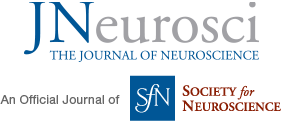Abstract
Pain associates both sensory and emotional aversive components, and often leads to anxiety and depression when it becomes chronic. Here, we characterized, in a mouse model, the long-term development of these sensory and aversive components as well as anxiodepressive-like consequences of neuropathic pain and determined their electrophysiological impact on the anterior cingulate cortex (ACC, cortical areas 24a/24b). We show that these symptoms of neuropathic pain evolve and recover in different time courses following nerve injury in male mice. In vivo electrophysiological recordings evidence an increased firing rate and bursting activity within the ACC when anxiodepressive-like consequences developed and this hyperactivity persists beyond the period of mechanical hypersensitivity. Whole-cell patch-clamp recordings also support ACC hyperactivity, as shown by increased excitatory postsynaptic transmission and contribution of NMDA receptors. Optogenetic inhibition of the ACC hyperactivity was sufficient to alleviate the aversive and anxiodepressive-like consequences of neuropathic pain, indicating that these consequences are underpinned by ACC hyperactivity.
SIGNIFICANCE STATEMENT
Chronic pain is frequently comorbid with mood disorders such as anxiety and depression. It has been shown that it is possible to model this comorbidity in animal models by taking into consideration the time factor. In this study, we aimed at determining the dynamic of different components and consequences of chronic pain, and correlated them with electrophysiological alterations. By combining electrophysiological, optogenetic and behavioral analyses in a mouse model of neuropathic pain, we show that the mechanical hypersensitivity, ongoing pain, anxiodepressive-consequences and their recoveries do not necessarily exhibit temporal synchrony during chronic pain processing, and that the hyperactivity of the anterior cingulate cortex is essential for driving the emotional impact of neuropathic pain.
Footnotes
The authors declare no competing financial interests.
We thank Stéphane Doridot for assistance in breeding mice and in genotyping and Elaine Gravel for her technical support. We also thank Dr. Modesto R Peralta for English editing. This work was supported by the Centre National de la Recherche Scientifique (contract UPR3212), the University of Strasbourg, the NeuroTime Erasmus Mundus Joint doctorate and by a NARSAD Young Investigator Grant (18893) from the Brain & Behavior Research Foundation (IY). PEL was supported by fellowships from the Fondation pour la Recherche Médicale, and from the Fondation Deniker. MZ was supported by Canada Research Chair, CIHR Operating Grant MOP-124807 and Azrieli Neurodevelopmental Research Program and Brain Canada.











Jump to comment: